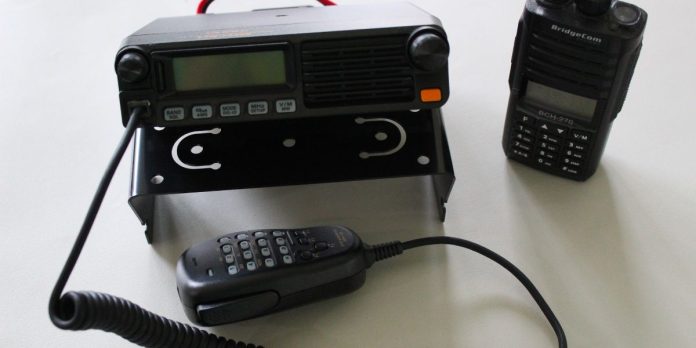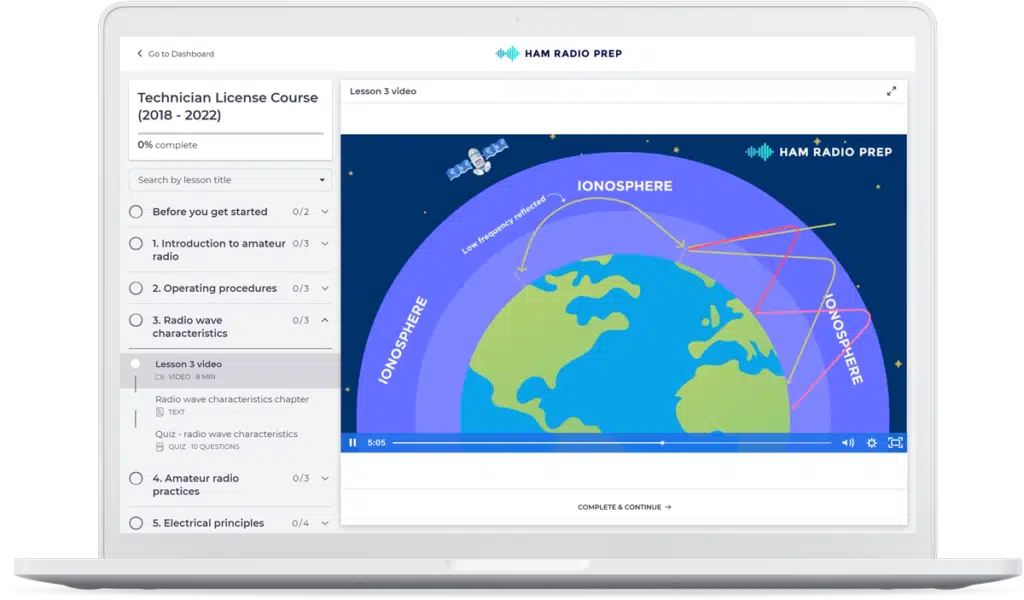Many newcomers to the amateur radio arena are often looking for a one-size-fits-all radio that covers all their communications needs. However, you will not find a dual-purpose CB/amateur radio on the same device because it’s in direct violation of FCC rules.
A ham radio talking to a CB radio is a matter of both technicality and legality. Can you do it? In some cases, yes; in most cases, no.
Should you? Not really. In all cases — except one — it is both illegal and impractical for a ham radio operator to communicate with a CB radio operator and vice versa.
FCC Regulations
In 1958, the FCC created a Class D CB service with 23 channels on 27 MHz. Twenty-two of those channels were taken directly from the amateur radio 11-meter band. As such, you’d think it’s fairly easy for CB (citizen band) operators and ham operators to communicate with one another, but this isn’t the case at all.
Part 95 Subpart D of the FCC directly prohibits CB users from attempting to communicate with amateur radio users. It also limits CB radios to a maximum of 4 watts when using AM/FM or 12 watts when using single-sideband communications.
Moreover, it prohibits manufacturers from building CB radios to include any other operating bands or frequencies outside those authorized by the FCC.
Likewise, a licensed ham radio operator is only allowed to talk to other licensed users. Since operating a CB radio does not require a license, a ham operator communicating with an unlicensed CB user would directly violate this rule.
Additionally, since the weakest of ham radios begins at 5 watts, using it as a CB radio violates the aforementioned 4-watt maximum.
Violating FCC regulations can result in loss of license, fines up to $10,000, and/or imprisonment for up to two years.
Incompatible Frequencies
From a technical perspective, the lack of a shared frequency prevents ham operators from communicating with CB users. “Frequency” refers to the actual radio wave that is transmitted and received by any radio and is measured in hertz (Hz). This identifies how many cycles of the wave occur within a one-second period.
As mentioned, CB radios operate on the 11-meter band within the high frequency (HF) spectrum. A “band” is simply a metric measurement of the wavelength. So the wavelength of the CB band is 11 meters.
This 11-meter band now covers 40 corresponding channels. Each CB channel corresponds to an exact frequency. So, channel 1 covers 26.965 MHz, and the notorious breaker 1-9 covers 27.1850 MHz all the way through channel 40, which directly correlates to 27.405 MHz.
Amateur radios don’t particularly correlate to specific channels. Instead, they utilize different frequencies within a particular band.
Just below the 11-meter band, amateur radio occupies the 10-meter band that covers frequencies from 28 MHz to 29 MHz. And just above 11 meters, amateur radio also features the 12-meter band that hovers around 24 MHz.
Although both amateur radios and citizen-band radios operate within the same high-frequency range, they operate on different bands, rendering them incompatible.
Other Compatibility Issues
Besides frequency, CB radios and ham radios have other differences that prevent them from communicating.
CB radios come with preset channels and don’t allow setting your own frequencies. Likewise, most ham radios won’t pick up the 11-meter band. Modern-day ham radios mostly work in the very high frequency (VHF) and ultra-high frequency (UHF) ranges.
This places your communication range in the 2-meter band (145.2–147.39 MHz) and the 70-cm band (440 MHz), both of which are nowhere close to the 11-meter range. Some newer ham radios allow monitoring of the 11-meter band, but not transmitting.
The one exception that might allow a ham radio and CB radio to communicate with one another is if you happen to have an older ham radio in working order. Remember, the original 23 channels used to create the 11-meter band were pulled from amateur radio frequencies.
So if you’re lucky enough to have a working radio from the late ’50s or early ’60s, then it would be fully capable of communicating on the 11-meter band without any modifications.
But still illegal nonetheless.
Therefore, the reality of a ham radio communicating with a CB radio would require an illegal modification, as well as the technical ability to modify the radio.
The Emergency Rule
The FCC does allow for off-collar communications during various states of emergencies:
- When the safety of life and/or property is threatened and no other communication is available
- When an amateur station is in distress
- To assist another station in distress
- When normal communication systems are overloaded, damaged, or disrupted due to disasters
Should you ever choose to operate your ham under the guise of the FCC Emergency Communications rule, you should be well prepared to defend your actions after the fact.
Maybe you’re considering the possibility of an SHTF or TEOTWAWKI scenario in which you could justify hams and CBs communicating with one another. Even still, certain obstacles would interfere:
- Ham to CB: Even during an emergency situation, if you don’t have a HAM radio that’s already been illegally modified, then you have no way of transmitting on a CB radio frequency.
- CB to ham: Unlike amateur radios with fixed frequencies for emergency channels, CBs don’t have any dedicated channels. Remember, you can’t program them. So even if you knew all the emergency frequencies that most amateur-radio operators preprogram into their radios, you wouldn’t be able to use them.
Additionally, you’d have to modify your CB radio to boost its power since CBs don’t have radio repeaters. So even if you could legally communicate from a CB radio to a ham radio during an emergency, it would severely hamper the utility of the radio.
Especially given the fact that CB radios have a significantly reduced range compared to hams. You’d be crippling your abilities instead of enhancing them.
Read more about ham radio range
At the end of the day, you’re better off having both radios on hand. CB radios are still quite useful, but for versatility and long-distance communication, you can’t beat a ham radio.
Read our guide to the best ham radio for preppers
20% OFF Coupon
Ham Radio Online License Classes
The Ham Radio Prep program makes it fast, easy and fun to get your license in just a few hours of study time. They even offer a money-back guarantee if you don’t pass your exam on your first try.
Use code PRIMAL for 20% OFF!









